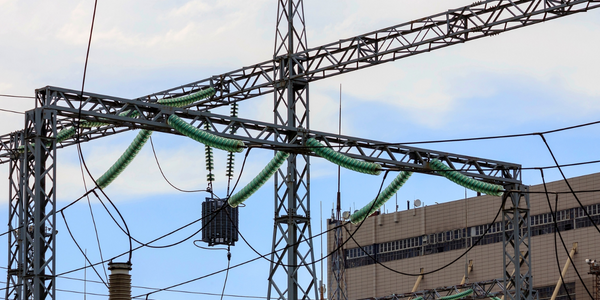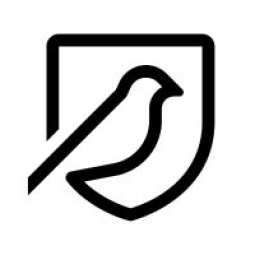Technology Category
- Sensors - Chemical Sensors
- Sensors - Liquid Detection Sensors
Applicable Industries
- Chemicals
- Electrical Grids
Applicable Functions
- Product Research & Development
Use Cases
- Inventory Management
- Onsite Human Safety Management
Services
- System Integration
About The Customer
E-CO Energi is a leading power company based in Oslo, Norway. Founded in 1892, the company is the second-largest producer of electricity in Norway, generating enough renewable energy to supply half of all Norwegian households. This equates to supplying electricity to more than 2.8 million people. E-CO Energi's core activities include the ownership and management of hydropower plants and the development of new renewable power projects. They also provide system services to the power system and sell power in the wholesale market. The company has been a client of EcoOnline for over 10 years.
The Challenge
E-CO Energi, a Norwegian power company, faced significant challenges in managing and tracking their chemicals in accordance with legal requirements. Prior to implementing EcoOnline's software, the company relied on traditional methods of tracking chemicals using ring binders. This manual process was not only time-consuming but also made it difficult for the company to keep their records up-to-date. The company needed to constantly obtain the latest safety data sheets, which was a daunting task. The lack of a streamlined process for managing chemicals posed a risk to the company's operations and compliance with safety regulations.
The Solution
E-CO Energi adopted EcoOnline's software to manage their chemical tracking and reporting. The software provided a comprehensive overview of the use of chemicals and the associated risks. It ensured that the company always had access to up-to-date safety data sheets. The software also allowed the company to generate useful reports related to inventory, risk assessment, exposure, and more. Each location or department within E-CO Energi now has a dedicated chemical manager who keeps the documentation for the chemical work up-to-date. EcoOnline's software also provided notifications in the database, such as new safety data sheets, the need for new risk assessments, and automatic exposure warnings, making the work easier and less time-consuming for the chemical safety managers.
Operational Impact
Quantitative Benefit

Case Study missing?
Start adding your own!
Register with your work email and create a new case study profile for your business.
Related Case Studies.

Case Study
Honeywell - Tata Chemicals Improves Data Accessibility with OneWireless
Tata was facing data accessibility challenges in the cement plant control room tapping signals from remote process control areas and other distant locations, including the gas scrubber. Tata needed a wireless solution to extend its control network securely to remote locations that would also provide seamless communication with existing control applications.

Case Study
Advanced Elastomer Systems Upgrades Production
In order to maintain its share of the international market for thermoplastic elastomers AES recently expanded its Florida plant by adding a new production line. While the existing lines were operating satisfactorily using a PROVOX distributed control system with traditional analog I/O, AES wanted advanced technology on the new line for greater economy, efficiency, and reliability. AES officials were anxious to get this line into production to meet incoming orders, but two hurricanes slowed construction.

Case Study
Hydro One Leads the Way In Smart Meter Development
In 2010, Ontario’s energy board mandated that time-of-use (TOU) pricing for consumers be available for all consumers on a regulated price plan. To meet this requirement, Hydro One needed to quickly deploy a smart meter and intelligent communications network solution to meet the provincial government’s requirement at a low cost. The network needed to cover Hydro One’s expansive service territory, which has a land mass twice the size of Texas, and its customers live in a mix of urban, rural, and remote areas, some places only accessible by air, rail, boat or snowmobile. Most importantly, the network needed to enable future enterprise-wide business efficiencies, modernization of distribution infrastructure and enhanced customer service. To meet these needs, Hydro One conceptualized an end-to-end solution leveraging open standards and Internet Protocols (IP) at all communication levels. The utility drew upon industry leaders like Trilliant to realize this vision.

Case Study
Selling more with Whirlpool
Whirlpool wanted to add connectivity to appliances and transform the company's relationship with customers. Traditionally, Whirlpool interaction with customers was limited to purchases made once every ten years. Connected washer and dryers provide exciting new features like remote management of start times and inter-machine communication.

Case Study
SAS® Analytics for IoT: Smart Grid
Companies face falling revenues, rising infrastructure costs, and increasing risk of outages caused by inconsistent energy production from renewable sources. Less money is coming in as more people and organizations take steps to curb their energy use. Utilities are paying more to maintain and build infrastructure due to increasing complexity, resulting from the rising number of intermittent and variable renewable energy sources connected in the distribution grid.








